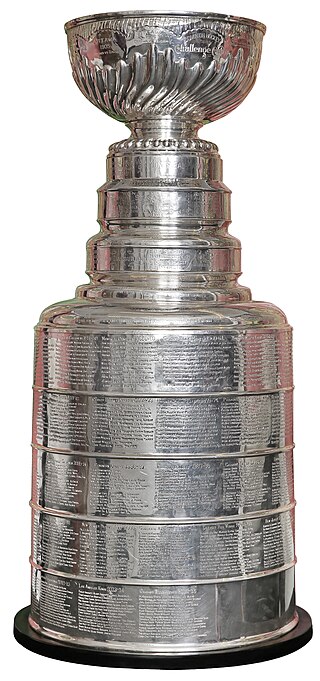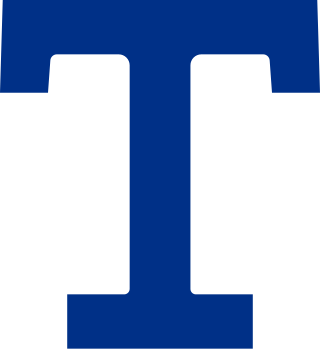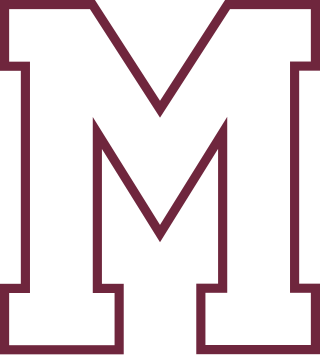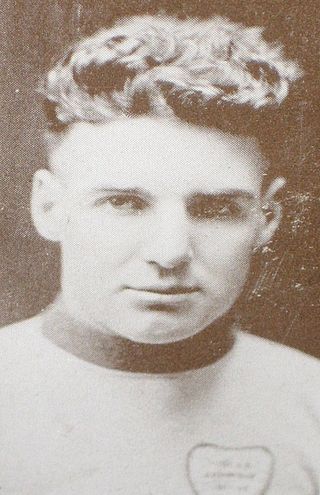Related Research Articles

The National Hockey League is a men's professional ice hockey league in North America comprising 33 teams – 26 in the United States and 7 in Canada. The Stanley Cup, the oldest professional sports trophy in North America, is awarded annually to the league playoff champion at the end of each season. The NHL is one of the major professional sports leagues in the United States and Canada and is considered to be the top ranked professional ice hockey league in the world, with players from 17 countries as of the 2023–24 season. The International Ice Hockey Federation (IIHF) also views the Stanley Cup as one of the "most important championships available to the sport". The NHL is headquartered in Midtown Manhattan.

The Stanley Cup is the championship trophy awarded annually to the National Hockey League (NHL) playoff champion. It is the oldest existing trophy to be awarded to a professional sports franchise in North America, and the International Ice Hockey Federation (IIHF) considers it to be one of the "most important championships available to the sport". The trophy was commissioned in 1892 as the Dominion Hockey Challenge Cup and is named after Lord Stanley of Preston, the Governor General of Canada, who donated it as an award to Canada's top-ranking amateur ice hockey club. The entire Stanley family supported the sport, the sons and daughters all playing and promoting the game. The first Cup was awarded in 1893 to the Montreal Hockey Club, and winners from 1893 to 1914 were determined by challenge games and league play. Professional teams first became eligible to challenge for the Stanley Cup in 1906. In 1915, the National Hockey Association (NHA) and the Pacific Coast Hockey Association (PCHA), the two main professional ice hockey organizations, reached an agreement in which their respective champions would face each other annually for the Stanley Cup. It was established as the de facto championship trophy of the NHL in 1926 and then the de jure NHL championship prize in 1947.

The American Hockey League (AHL) is a professional ice hockey league based in the United States and Canada that serves as the primary developmental league for the National Hockey League (NHL). As of the 2023–24 AHL season, 31 of the 32 AHL teams had an official affiliation with an NHL team; immediately following season's end, the Chicago Wolves and Carolina Hurricanes finalized an affiliation agreement, resulting in all AHL teams having an NHL affiliation for the upcoming 2024–25 season. Historically, when an NHL team does not have an AHL affiliate, its players are assigned to AHL teams affiliated with other NHL franchises.

The Toronto Arenas or Torontos were a professional men's ice hockey team that played in the first two seasons of the National Hockey League (NHL). It was operated by the owner of the Arena Gardens, the Toronto Arena Company. As the ownership of the National Hockey Association (NHA) Toronto Blueshirts franchise was in dispute, the new NHL league was started, and a temporary Toronto franchise was operated. The NHL itself was intended to only be a one-year entity until the NHA could be reactivated, although it never was.

The Montreal Maroons were a professional ice hockey team in the National Hockey League (NHL). They played in the NHL from 1924 to 1938, winning the Stanley Cup in 1926 and 1935. They were the last non-Original Six team to win the Stanley Cup until the expansion Philadelphia Flyers won in 1974.

The Toronto St. Patricks were a professional ice hockey team which began playing in the National Hockey League (NHL) in 1919. The Toronto NHL franchise had previously been held by the Arena Company, but despite winning the Stanley Cup the team was bankrupt and pulled out of the league after just two seasons. The rights to the Toronto franchise were purchased by a group of investors with links to an amateur club called the "St. Patricks". The new owners renamed the NHL franchise after the amateur club, and as the St. Patricks the team won the Stanley Cup in 1922. J.P. Bickell invested in the St. Patricks in 1924 as a favour to Charlie Querrie. In 1927, Charlie Querrie and other investors wanted out, J.P. Bickell made arrangements for other Toronto investors and initially hired Mike Rodden to run the hockey operations, which did not work out. He then hired Conn Smythe as the Managing Partner. The team was renamed to the Toronto Maple Leafs during the 1926–27 NHL season.

The Quebec Bulldogs were a men's senior-level ice hockey team based in Quebec City. The team was officially known as the Quebec Hockey Club, and later as the Quebec Athletic Club. One of the first organized ice hockey clubs, the club debuted in 1878 with the opening of the Quebec Skating Rink. The club continued as an amateur team through various leagues, eventually becoming professional in 1908. The club would play in the National Hockey Association and the National Hockey League. In 1920, the team moved to Hamilton, Ontario and became the Hamilton Tigers.

The Hamilton Tigers were a professional ice hockey team based in Hamilton, Ontario that competed in the National Hockey League (NHL) from 1920 to 1925. The Tigers were formed by the sale of the Quebec Bulldogs NHL franchise to Hamilton interests. After years of struggling, the franchise finished first in the league in the 1924–25 NHL season, but a players' strike before the playoffs resulted in the franchise's dissolution. The players' contracts were sold to New York City interests to stock the expansion New York Americans. A namesake amateur team existed prior to and during the NHL team's existence, and a minor league professional team named the Hamilton Tigers existed from 1926 to 1930.

The Calder Cup is the trophy awarded annually to the playoff champions of the American Hockey League. It was first presented in 1937 to the Syracuse Stars.
The National Hockey Association (NHA), initially the National Hockey Association of Canada Limited, was a professional ice hockey organization with teams in Ontario and Quebec, Canada. It is the direct predecessor of today's National Hockey League (NHL), and much of the business processes of the NHL today are based on the NHA. Founded in 1909 by Ambrose O'Brien, the NHA introduced 'six-man hockey' by removing the 'rover' position in 1911. During its lifetime, the league coped with competition for players with the rival Pacific Coast Hockey Association (PCHA), the enlistment of players for World War I and disagreements between owners. The disagreements between owners came to a head in 1917, when the NHA suspended operations in order to get rid of an unwanted owner, Eddie Livingstone.
The Pacific Coast Hockey Association (PCHA) was a professional ice hockey league in western Canada and the western United States, which operated from 1911 to 1924 when it then merged with the Western Canada Hockey League (WCHL). The PCHA was considered to be a major league of ice hockey and was important in the development of the sport of professional ice hockey through its innovations.

Edward James Livingstone was a Canadian sports team owner and manager. He was the principal owner of the Toronto Shamrocks and the Toronto Blueshirts professional ice hockey clubs of the National Hockey Association (NHA), where his battles with his fellow owners led them to create the National Hockey League.
The 1926–27 NHL season was the tenth season of the National Hockey League. The success of the Boston Bruins and the Pittsburgh Pirates led the NHL to expand further within the United States. The league added three new teams: the Chicago Black Hawks, Detroit Cougars, and New York Rangers, to make a total of ten, split in two divisions. This resulted in teams based in Canada being in the minority for the first time. To stock the teams with players the new teams brought in players from the Western Hockey League, which folded in May 1926. This left the NHL in sole possession of hockey's top players, as well as sole control of hockey's top trophy, the Stanley Cup, which was won by the Ottawa Senators. This was the original Senators' eleventh and final Stanley Cup win. The Senators' first was in 1903.
The Canadian Professional Hockey League, also known as Can-Pro, was a minor professional hockey league founded in 1926. After three seasons, it became the International Hockey League (IHL) in 1929. The Can-Pro name was then given to a new league of IHL farm teams which operated in the 1929–30 season.

Cecil Henry "Babe" Dye was a Canadian professional ice hockey forward who played 11 seasons in the National Hockey League (NHL) for the Toronto St. Patricks/Maple Leafs, Hamilton Tigers, Chicago Black Hawks, and the New York Americans between 1919 and 1930. Born in Hamilton, Ontario, Dye was known as an excellent stick-handler, and goal-scorer.

Frank Corbett "Flash" Foyston was a Canadian professional ice hockey player and coach. Foyston was a member of Stanley Cup championship teams three times: with the Toronto Blueshirts in 1914, the Seattle Metropolitans in 1917, and the Victoria Cougars in 1925. While with the Metropolitans, he twice led the Pacific Coast Hockey Association (PCHA) in goals. After his retirement from playing, Foyston became a minor league head coach. He was inducted into the Hockey Hall of Fame in 1958.

Frederick Wellington "Cyclone" Taylor, MBE was a Canadian professional ice hockey player and civil servant. A cover-point and rover, he played professionally from 1906 to 1922 for several teams and is most well-known for his time with the Vancouver Millionaires of the Pacific Coast Hockey Association (PCHA). Acknowledged as one of the first stars of the professional era of hockey, Taylor was recognized during his career as one of the fastest skaters and most prolific scorers, winning five scoring championships in the PCHA. He also won the Stanley Cup twice, with Ottawa in 1909 and Vancouver in 1915, and was inducted into the Hockey Hall of Fame in 1947.

The 1917–18 Toronto Hockey Club season was the first season of the new Toronto franchise in the newly-organized National Hockey League (NHL). The team was intended as a 'temporary' franchise, operating without an official club nickname and without a formal organization separate from the Toronto Arena Company that managed the Arena Gardens. Despite this, the team came together to win the first NHL Championship, competing against existing teams that had transferred directly from the National Hockey Association (NHA). Toronto would go on to win the Stanley Cup by defeating the Pacific Coast Hockey Association champion Vancouver Millionaires – the first Stanley Cup for an NHL team and the second Cup for a Toronto team after the Toronto Blueshirts' victory in the 1913–14 season of the NHA. To this day, the Toronto Arenas are the only team in the four major North American sports to win the title in their first season as a franchise.

The National Hockey League (NHL) was founded in 1917 following the demise of its predecessor league, the National Hockey Association (NHA). In an effort to remove Eddie Livingstone as owner of the Toronto Blueshirts, a majority of the NHA franchises suspended the NHA and formed the new NHL. The Quebec Bulldogs, while a member, did not operate in the NHL for the first two years. Instead the owners of the Toronto Arena Gardens operated a new Toronto franchise. While the NHL was intended as a temporary measure, the continuing dispute with Livingstone led to the four NHA owners meeting and making the suspension of the NHA permanent one year later.
The Hamilton Tigers were a professional ice hockey team based in Hamilton, Ontario. They competed in the Canadian Professional Hockey League (CPHL) from 1926 to 1929 then in the International Hockey League (IHL) from 1929 to 1930.
References
- ↑ Ross, J. Andrew (2015). Joining the Clubs: The Business of the National Hockey League to 1945. Syracuse, New York: Syracuse University Press. ISBN 978-0-8156-3383-9.
- ↑ "International Hockey League [1926-1936] history and statistics". Hockey DB. Retrieved May 8, 2024.